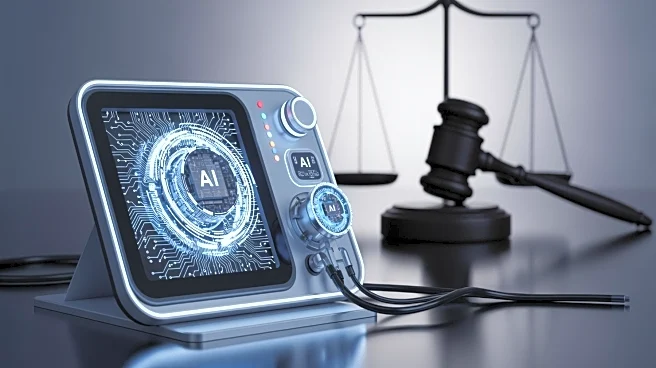What's Happening?
AI-enabled technologies in healthcare are facing significant regulatory challenges from the FDA and patent law. The FDA is updating its regulatory framework to ensure patient safety while fostering innovation,
particularly for technologies using machine learning or adaptive algorithms. These technologies can evolve post-deployment, raising concerns about transparency, bias, and safety. The FDA's guidance includes predetermined change control plans (PCCPs) to manage updates without new submissions, emphasizing transparency, bias mitigation, and post-market monitoring. Concurrently, patent law struggles with issues of inventorship and subject matter eligibility, as AI systems contribute to inventive steps. Courts have rejected AI as inventors, creating uncertainty in patent rights. Companies must document human involvement to preserve these rights.
Why It's Important?
The dual challenges from FDA regulation and patent law are crucial for the development and commercialization of AI-enabled medical technologies. FDA oversight ensures these technologies are safe and effective, protecting public health. Meanwhile, patent law incentivizes innovation by granting inventors a limited monopoly. Navigating these challenges is essential for companies to bring AI-driven healthcare solutions to market. Successfully addressing these hurdles can accelerate innovation, improve patient care, and maintain competitive advantage in the healthcare industry. However, failure to comply with regulatory and patent requirements could hinder technological advancement and limit market access.
What's Next?
Companies developing AI-enabled healthcare technologies must integrate regulatory and intellectual property strategies from the outset. Engaging with regulators early to align on safety and efficacy requirements is crucial. Designing PCCPs proactively allows for efficient updates within FDA-approved parameters. Coordinating patent strategy with regulatory timelines ensures claims emphasize technical improvements and human-directed innovation. By treating regulatory and IP strategies as parallel efforts, innovators can accelerate time to market while strengthening compliance and protection.











